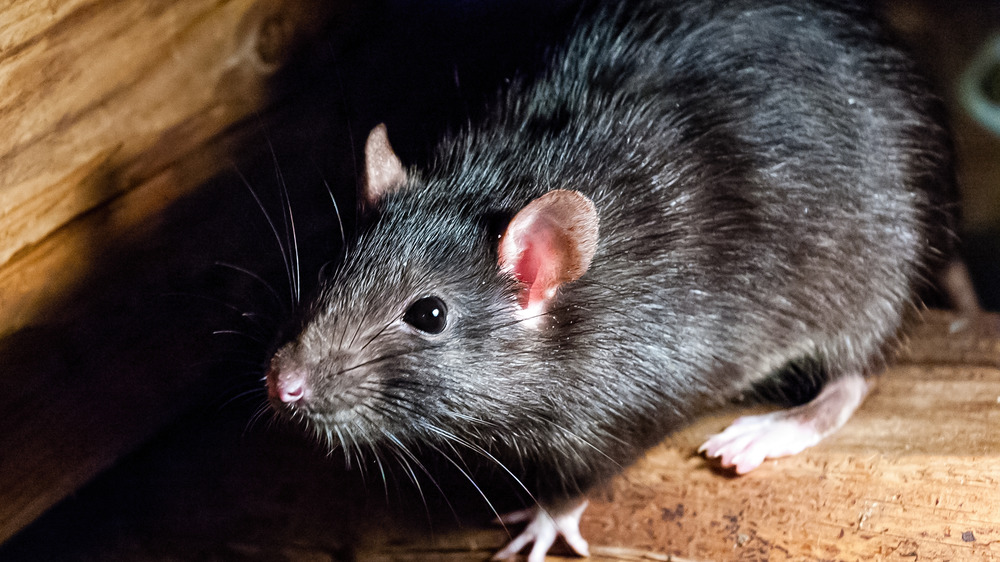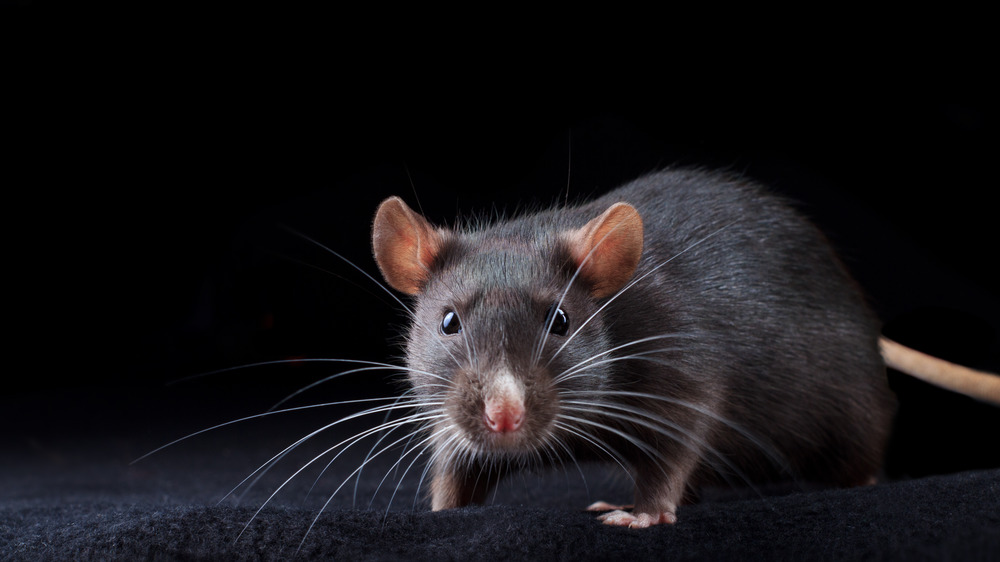The Disturbing History Of Rats And Torture
Rats can't seem to escape the gruesome. Although they can make cuddly pets for some, for many the mere mention of the rodents conjures images of grimy underground capers and rotting sewage. Above ground, they sometimes find themselves the subject of laboratory testing that can get quite grisly. Perhaps this is why it's no surprise that the long-tailed rodents have such a uniquely disturbing place in the history of torture.
Fire is enough to make any person or creature panic, and rat torture capitalized on this fear. After being placed on the victim's stomach, rat torturers covered the rodent with a pot and then applied heat. As the temperature increased and the fear of burning enveloped its brain, the rat desperately tried to escape — even if it meant tearing through the victim's stomach.
According to The Rise of the Dutch Republic by John Lothrop Motley, hot coals were the choice tool for ratcheting up the temperature and pressuring the rat to gnaw through the flesh of its victim's stomach. From here — as the rat burrowed away from the flame in its "agony to escape" — the book claims that additional torture methods were deployed to get a confession from the victim.
Rats were used in various torture regimes throughout history
Burning rats was not the only way the animals were used for torture. As noted by The Intercept, Augusto Pinochet, the former President of the Republic of Chile, is infamous for his penchant for ordering his enemies to be thrown into the ocean from a helicopter. But per Harvard Crimson, he also saw the benefit in using rats to force dissidents into submission. According to individuals who suffered under his regime, Pinochet used live rats — as well as spiders — to torture his victims by putting the creatures in their orifices.
Elsewhere, Paulo Malhães, the late Brazilian Army officer, allegedly used rats as a part of his sadistic torture regime. According to The Guardian, Malhães used rats — along with snakes and crocodiles — to inflict fear in his prisoners as a form of psychological torture, which he previously expressed an affinity for. While speaking to Brazil's National Truth Commission, Malhães said, "Psychological torture was best."

